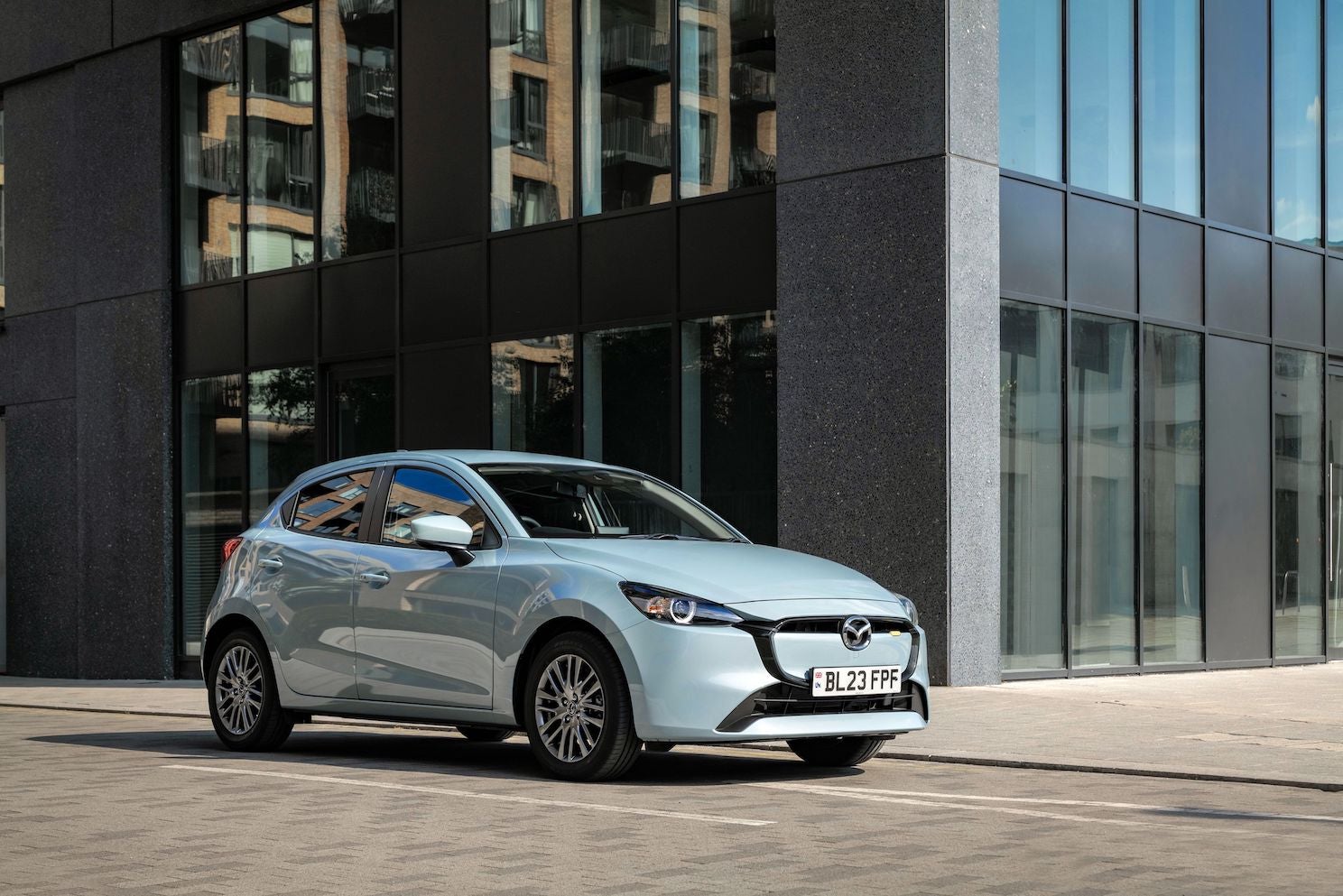
How does Mazda keep succeeding? Maybe it’s due to how it approaches model plans in very different ways to other OEMs – starting with a couple of its smallest cars.
It’s been around for a long time but the Mazda2 is far from past it. Straight away, it’s necessary to point out which car I am taking about: the Hiroshima-based company’s own B segment hatchback. The other one – the Mazda2 Hybrid – is supplied by Toyota Motor Europe, it being a lightly altered Yaris.
Both the 2s have been updated in recent times, the Hybrid facelifted in September and the built-in-Japan original given yet another round of updates also earlier in 2023. That includes the option of a mild hybrid engine rather than the series hybrid of the Toyota-derived 2.
This generation of the little hatchback – which has also been offered as a three-door and a sedan in many countries – has aged incredibly well. In fact, only a small boot (280 litres) and the lack of the 2020s-style big touchscreen really date it. The former likely doesn’t worry those who buy the car and the latter might even be a plus to many.
A bit of history
Production of the current shape model commenced at Mazda’s Hofu plant south-east of Hiroshima back in July 2014. Next, build at AutoAlliance/Rayong in Thailand was added (two months later). Then came, MMVO, a new plant in Mexico, which produced not only the 2 but the Scion iA. It didn’t last long though, Toyota phasing out that brand in 2016. However the car lived on, evolving into the Yaris iA, another special model for North America. And the two OEMs continue to co-produce vehicles in and for multiple regions.

US Tariffs are shifting - will you react or anticipate?
Don’t let policy changes catch you off guard. Stay proactive with real-time data and expert analysis.
By GlobalDataThere have been quite a few powertrain variations, including a diesel which was mainly for European markets, now discontinued. Not that Mazda has axed all such engines; quite the opposite: witness the new straight-six as fitted to a couple of equally fresh CX SUVs.
An OEM going its own way
The backstory is meant to illustrate not just how versatile the little 2 has been during almost a decade of production, but also the way that Mazda defies convention. Name another medium-sized car maker which would choose to limit investment in EVs, instead backing the Wankel (as a range extender). Oh and also develop its own large SUVs on a new platform with some relatively big capacity engines to power them.
Surely what some might term a dangerous and eccentric way of doing things has got Mazda into financial strife? Quite the opposite, as its results for the most recent two quarters prove. Most of the money is made in the USA yet Europe, along with Japan and the Asia-Pacific region remain important markets. Not only for volume but profits.
Classics as cash generators
Just as Stellantis keeps building the sixteen years old Fiat 500 because there is still much demand and not a lot of cost, so Mazda seems to have no plans to phase out the 2.
The recent programme of revisions has done much to keep the car competitive. OK, it’s not doing Clio or 2008 or Yaris volume but so what? There are a lot of people who love the likes of the Honda Jazz. We can also be sure that Mazda dealers have many customers on their second or third example of the current shape model.
What’s good…
The appeal of the 2 starts with how it looks. The most recent facelift was a small one yet it has lent the car a slightly more upscale appearance. That’s helped by lots of colour coding and a strong palette of premium-feeling paint choices.
Build quality is surely just about the equal best in the class – as good as Toyota that is. What’s more, all doors open very wide, have a solid-sounding thunk and the interior in general is full of very durable plastics and fabrics.
…and what dates it
It’s really only a lack of room for larger adults sitting in the back which dates the 2 inside. But it’s hardly likely anyone purchasing this model travels five-up for hours and hours.
That a car of this age is so enjoyable to drive speaks volumes for how well designed the basic platform was. And, how well developed it has been. Don’t forget, the architecture was jointly developed with Ford and formed the basis of the Fiesta, a car famous for its first rate dynamics.
Steering the 2 is quite fun even on boring roads and for a car with a relatively short wheelbase it rides well. The test model came with a 115 PS (85 kW) engine, with a 90 PS (66 kW) version of the same 1.5-litre mild hybrid unit also available. Even though the Mazda is a commendably light vehicle, the higher priced option is worth the money as there’s a fair bit more go and economy hardly suffers. And there are both six-speed manual and automatic transmission options.
Summary
Great handling, crisp looks, proper buttons and dials on the dashboard, decent performance, strong standard equipment and almost bargain pricing mark the latest Mazda2 out in a crowded class. As a value package, it will be hard to replace when that time eventually comes.
The as-tested Mazda2 155 PS 1.5-litre E-SkyActiv G in top-spec Homura Aka model grade costs from GBP23,835. CO2 emissions are an average of 113 g/km and Combined consumption is 56.5 mpg.



